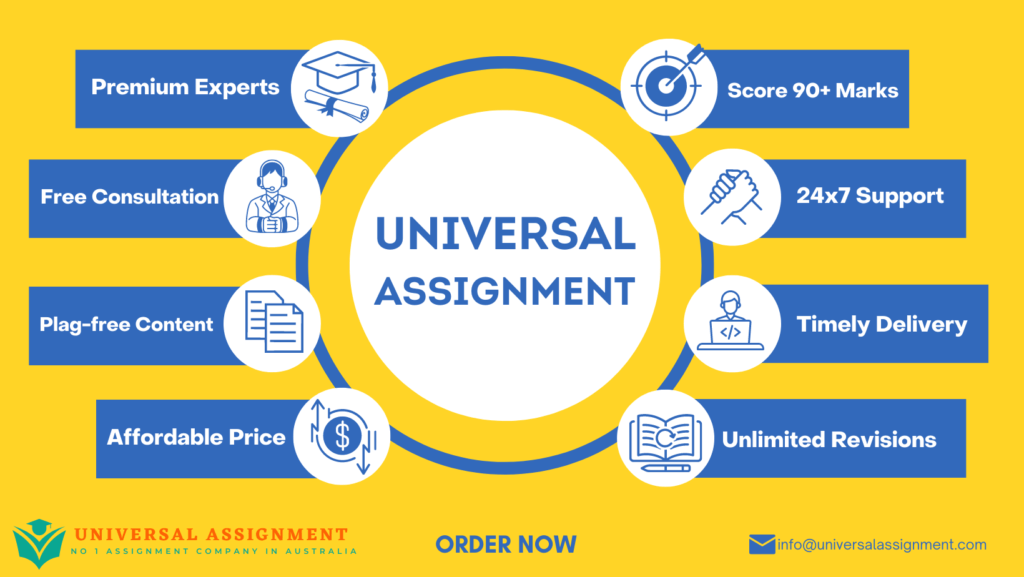
THC201 Sustainable Operations and Destinations Assessment 1 – Individual Essay (30%)
Trimester 2 – 2022
Marks Allocated: 30 %
Length: 2,000 words with an allowance of a 10% variance
Due Date: Reports must be uploaded to Moodle by Sunday, week 5
Criteria for marking: The criteria for marking rubric for this assessment is attached at the end of this document. Students will be awarded a grade based on the rubric.
The Task
- This is an individual task.
- This assessment activity relates to the various types of sustainable tourism. The following is a list of suggested approaches to sustainable tourism, however, there may be others you wish to investigate. You should compare and contrast three different forms of Sustainable Tourism, before providing your recommendations.
- Ecotourism
- Community-based tourism
- Responsible tourism
- Explore the broader sustainable tourism literature on sustainability, and detail the various forms currently put forward. Examine the positives and negatives of various approaches, and the impacts on key stakeholders, before ultimately recommending the key principles of a sustainable approach to destination management which ensures positive outcomes for all parties.
- Full referencing in line with Stotts College/ Acknowledge Education requirements is needed. Note that there is no minimum number of academic references required, and it is acceptable to rely on the theories, frameworks and models used in the textbook. However, all academic sources (including the textbook) and all business, government and professional sources need to be referenced
- This is a short essay. It will not be possible to provide a comprehensive analysis of all aspects of the strategic actions within the word limit. It is important that in your introduction you have a statement of purpose that outlines the focus & structure of your report.
- In answering the questions, students should focus on what they consider to be the key aspects of Sustainable Tourism, rather than providing comprehensive coverage of all aspects.
- The report structure outlined in the next section of this guide should be followed.
- Tables and diagrams can be used in addition to the word count, and if used should be referenced and included in an Appendix.
Structure of the report
| Section | Content |
| Introduction | Approximately 200 words States the structure and purpose of the report, the countries selected, and why they were selected |
| Discuss and explain in detail the three forms of Sustainable Tourism: EcotourismCommunity-based tourismResponsible tourism | Approximately 300 words. Discuss the different forms using the theories, frameworks and models identified in the textbook. |
| Contrast the positives and negatives of various approaches to Sustainable Tourism | Approximately 500 words. Discusses using the theories, frameworks and models identified in the textbook. |
| What do the impacts various approaches have on key stakeholders | Approximately 400 words. Discusses using the theories, frameworks and models identified in the textbook. |
| Recommending the key principles of a sustainable approach to destination management which ensures positive outcomes for all parties. | Approximately 400 words. Discusses using the theories, frameworks and models identified in the textbook. |
| Conclusion | Approximately 200 words. Summarises the report and draws a conclusion regarding the attractiveness of the environment of each country to international business. |
| Professionally presentation and referencing | Consistent & Comprehensive referencing and bibliography; Spell and grammar checked; Structure follows the expectations outlined in the detailed assignment guide, |
Assessment 1 – Exploratory Essay Marking Rubric
| Criteria | High Distinction 80%- | Distinction 70%- 79% | Credit 60-69% | Pass 50-59% | Fail 0-49% |
| Presentation ¼ of available marks | 4-5 | 3.5-4 | 3-3.5 | 2.5-3 | 0-2.5 |
| Understanding ½ of available marks | 8-10 | 7-8 | 6-7 | 5-6 | 0-5 |
| Scholarship ¼ of available marks | 4-5 | 3.5-4 | 3-3.5 | 3.5-3 | 0-2.5 |
| Total | 16-20 | 14-16 | 12-14 | 10-12 | 0-10 |
| Criteria | High Distinction 80%- | Distinction 70%- 79% | Credit 60-69% | Pass 50-59% | Fail 0-49% |
| Presentation Structure, style, grammar, fluency and effective communication of issues, findings and conclusions | Superior skill demonstrated in use of correct referencing style (APA) Proficient in paraphrasing key comments and sparing use of direct quotations Report set out in an expert and scholarly manner Scholarly use of correct language Adheres to word limit, answers all parts of the topic question. | High level of skill demonstrated in use of correct referencing style (Harvard) Paraphrased key comments and used direct quotations very sparingly Report set out in a professional manner Adheres to word limit, answers all parts of the topic question. | Reasonable skill in use of correct referencing style (Harvard) Direct quotations used sparingly Report set out in a good and acceptable manner Correct use of language Adheres to word limit, answers all parts of the topic question. | Some inaccuracies in use of correct referencing style (Harvard) Quotations used frequently Report set out in fair manner Reasonably correct use of language Adheres to word limit, answers all parts of the topic question. | Referencing is either insufficient or contains significant inaccuracies Quotations over- used and/or used when irrelevant Presentation poorly set out Poor use of language, grammar and spelling Does not adhere to word limit and/or answer all parts of the topic question. |
| Understanding Demonstrated understanding of concepts and issues relevant to the discussion topic | Logical argument developed in a scholarly fashion and supported by evidence Conclusion draws argument together in an influential and scholarly manner Considerable evidence used to expertly support arguments | Logically developed argument which is clearly supported by evidence Comprehensive conclusion Considerable evidence used to competently support arguments | Logically developed argument which is supported by evidence Effective conclusion Evidence used to competently support arguments | Argument is not well developed and supported Conclusion evident Evidence used to support some arguments | Argument, if evidenced, not developed or supported Poor, if any conclusion Little or no evidence used to support arguments |
| Scholarship Evidence of ability to research, analyse and critique issues relevant to the discussion topic Academically rigorous use of supporting references and course content | Scholarly demonstration of critical analysis of theories and models Critical use of sources Highly proficient and scholarly use of a wide range of relevant sources of knowledge or data Scholarly application of relevant theories and models | Considerable demonstration of critical analysis of theories and models Critical use of sources Scholarly use of a wide range of sources of knowledge Competent application of relevant theories and models | Critical analysis of theories and models demonstrated generally Mostly critical use of sources Used a wide range of sources, most of which were relevant Application of theories and models relevant to the set task | Critical analysis of theories and models somewhat demonstrated Uncritical use of sources Limited use of sources of knowledge Application of some theories and models to the set task | Critical analysis poorly demonstrated if at all Uncritical use of (few) sources Very limited use and/or insufficient ranges of sources used Little application of theories and models to the set task |

Get expert help for Sustainable Operations and Destinations and many more. 24X7 help, plag free solution. Order online now!

